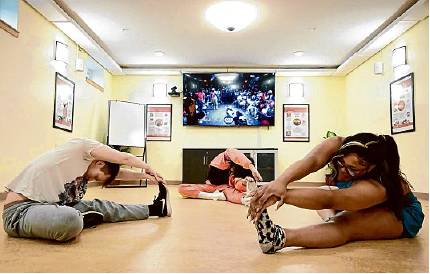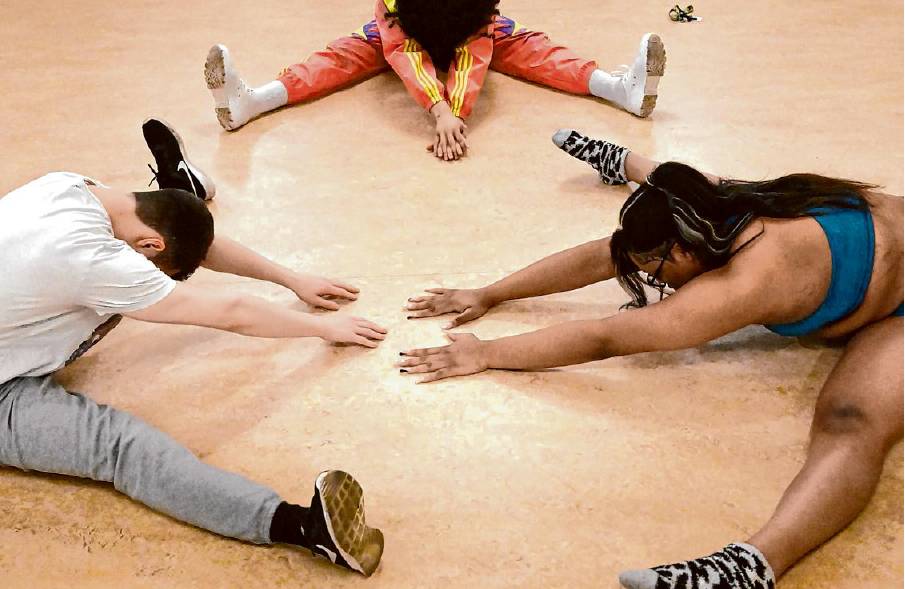A lifeline for LGBTQ+ youth
Kiki houses combat teen suicide one dance move at a time
By Kathleen Moore
For decades, queer teens would go to New York City to find acceptance and, perhaps, a new family at a kiki house.
Now that lifeline has come to Albany. Every Friday, the Damien Center is holding kikis — LGBTQ social gatherings — from 3 to 5 p.m., and on the second and fourth Wednesdays from 6 to 8 p.m. at Noteworthy Resources Center in Albany. They generally include a choreography lesson, information on the history of kiki, and socializing.
Kiki houses are the youth form of the gay ballroom scene, where people come together to dance competitively and show off their comfort in their own skin. That’s hard for transgender youth in particular to achieve, and the social gatherings help. In a kiki house, youth form a chosen family of people who accept them as they are and love them as if they were blood relations.
“For me, it was a big part of becoming comfortable with who I am,” said Marine Taveras, one of the organizers of the kiki events at the Damien Center. “When you participate in a group event where you know you’re going to be safe, you gain the confidence to go out into the world and be yourself.”
It’s hard to grow up queer. Nationally, about 40 percent of homeless youth identify as LGBTQ, according to the New York State Office of Children and Family Services. That puts them at a much higher risk of sex trafficking and drug abuse. Add in social isolation and familial rejection, and it can be deadly.
In New York state, 50 percent of transgender and nonbinary youth seriously considered suicide in 2022, and 16 percent attempted it, according to The Trevor Project, one of the largest LGBTQ youth suicide prevention organizations. Suicide rates are even worse in other states.
While suicide is the third highest cause of death among all youth ages 15 to 22, according to the Centers for Disease Control, queer youth are four times as likely to attempt suicide.
“This is a public health crisis, and it’s preventable,” said Kasey Suffredini, vice president of advocacy and government affairs for The Trevor Project. “Our government must work from the top down to curb risk factors like violence and discrimination, and increase access to essential health care, safe schools and support systems.”
He emphasized that The Trevor Project’s research shows suicide risk decreases if queer youth have a safe space and social support.
For Taveras, realizing she was transgender took years, during which she socialized with homeless queer youth in New York City and drank until she blacked out.
“There was a lot of trying to numb the fact that we were coming from broken homes where we weren’t being accepted,” she said.
Then she happened upon a kiki house event.
“That was the first time I saw queer youth just out and about and having fun,” she said. “I think ballroom is a safer outlet. It puts you inside these chosen families.”
Adults, who lead the kiki house events, guided her to accept herself as she practiced dance moves.
“I just shut that little voice off that was just saying, ‘Stop being gay,’” she said. “That’s what snowballed into how I’m OK with expressing myself.”
She is now talking with local school officials about running high school workshops to introduce kiki houses to teens.
The gay ballroom culture dates back at least a century, but it is now best known for the vogueing dance style popularized by Madonna in her 1990 song and music video “Vogue.” Kiki houses were created for youth, partly because they were sneaking into events held in venues that didn’t allow people under the age of 21.
The idea was to support youth, who were being ravaged by drug addiction, HIV/AIDS and homelessness.
That’s still happening today. Taveras remembers it all too well.
“I was in the darkest point in my life,” she said. “Being with chosen family that accepted me – that was very special. That’s what I want to be able to give to other folks.”


